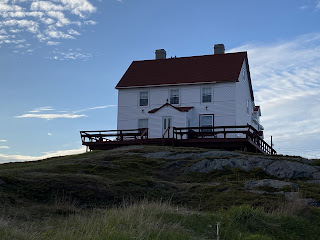Change Islands spans three small islands of the same name, two of which are populated with approximately 180 people. Each island is separated from the other by a ‘tickle’, or a narrow strait. The northern island (unpopulated) and middle island are separated by the North Tickle. The middle and southern islands are separated by the Main Tickle. The South Island is the largest, containing more marshes/bogs, and wooded areas. The Middle Island is smaller, mostly barren, and the Northern Island is the smallest, unpopulated and difficult to access. Change Islands was first settled in the early 1700’s by European settlers as a series of random settlements around the islands tied to seasonal fishing activity. The town as it is currently known developed into a cohesive community in the 20th century as the population gravitated towards the main tickle due to such things as resettlement, access to government services and changes in technology (i.e. motorized boats). The residents of Change Islands have preserved many of their traditional homes, stages and stores (fishing sheds).
Saturday, 11 June 2022
A new destination - Change Islands
Seven Oakes Island Inn is where I was staying. How could you not love this place?!
The view from my bedroom.
St. Margaret’s Anglican Church is the oldest church on Change Islands. It opened for worship in 1892.
The Newfoundland pony is a breed of pony originating in Newfoundland. They are sturdy and muscular ponies, found in many colours, including the relatively rare white colouration. The Newfoundland developed from a mix of English, Irish and Scottish pony breeds brought to Newfoundland by settlers over a period of four centuries. Initially free-roaming, they crossbred to produce the modern type. The were used by settlers as draft and multi-purpose ponies until the mid-20th century, when they were brought almost to the point of extinction by mechanization and slaughter. In 1997, the Newfoundland pony was declared a heritage breed of Newfoundland and Labrador, which afforded it protection under the law.
The Change Islands Newfoundland Pony Sanctuary was established in 2005 to carry out a breeding program with the goal of raising the numbers of the critically endangered ponies. Since its inception the sanctuary has bred 10 foals.
Not on the Newfoundland ponies, but on horseback is a common mode of transportation on Change Islands.
Just starting to bloom here.
The Main Tickle between the south and middle islands.
And the little bridge that joins the two islands.
Subscribe to:
Post Comments (Atom)




































No comments:
Post a Comment